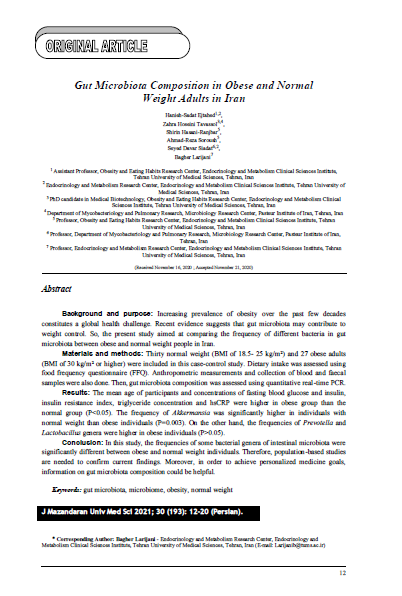Journal of Mazandaran University of Medical Sciences

Background and purpose: Increasing prevalence of obesity over the past few decades constitutes a global health challenge. Recent evidence suggests that gut microbiota may contribute to weight control. So, the present study aimed at comparing the frequency of different bacteria in gut microbiota between obese and normal weight people in Iran.
Materials and methods: Thirty normal weight (BMI of 18.5- 25 kg/m²) and 27 obese adults (BMI of 30 kg/m² or higher) were included in this case-control study. Dietary intake was assessed using food frequency questionnaire (FFQ). Anthropometric measurements and collection of blood and faecal samples were also done. Then, gut microbiota composition was assessed using quantitative real-time PCR.
Results: The mean age of participants and concentrations of fasting blood glucose and insulin, insulin resistance index, triglyceride concentration and hsCRP were higher in obese group than the normal group (P<0.05). The frequency of Akkermansia was significantly higher in individuals with normal weight than obese individuals (P=0.003). On the other hand, the frequencies of Prevotella and Lactobacillus genera were higher in obese individuals (P>0.05).
Conclusion: In this study, the frequencies of some bacterial genera of intestinal microbiota were significantly different between obese and normal weight individuals. Therefore, population-based studies are needed to confirm current findings. Moreover, in order to achieve personalized medicine goals, information on gut microbiota composition could be helpful.